Aditi Chandra
On the dynamics of convolutional recurrent neural networks near their critical point
May 22, 2024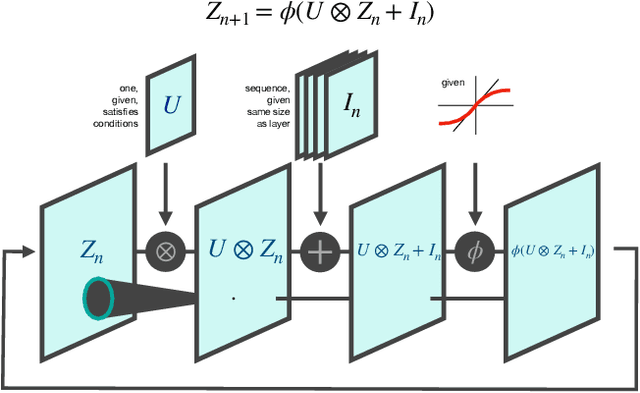
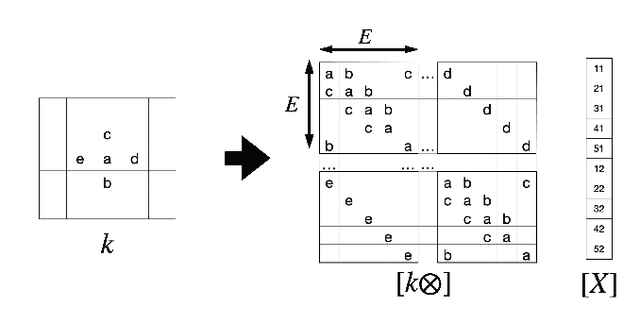
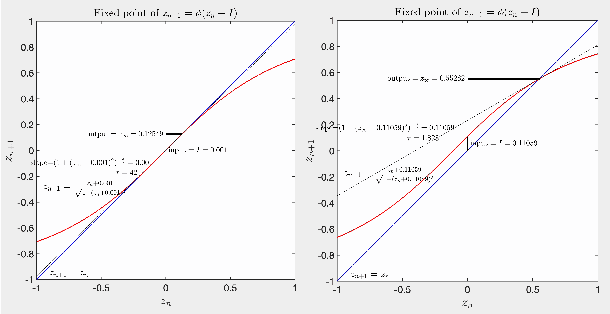
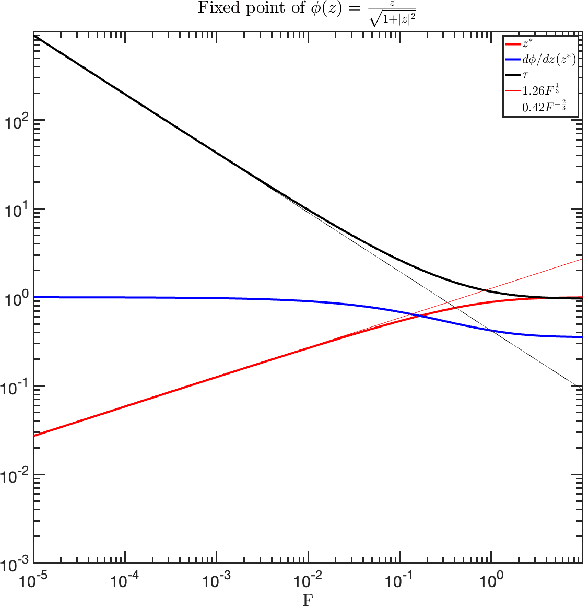
Abstract:We examine the dynamical properties of a single-layer convolutional recurrent network with a smooth sigmoidal activation function, for small values of the inputs and when the convolution kernel is unitary, so all eigenvalues lie exactly at the unit circle. Such networks have a variety of hallmark properties: the outputs depend on the inputs via compressive nonlinearities such as cubic roots, and both the timescales of relaxation and the length-scales of signal propagation depend sensitively on the inputs as power laws, both diverging as the input to 0. The basic dynamical mechanism is that inputs to the network generate ongoing activity, which in turn controls how additional inputs or signals propagate spatially or attenuate in time. We present analytical solutions for the steady states when the network is forced with a single oscillation and when a background value creates a steady state of ongoing activity, and derive the relationships shaping the value of the temporal decay and spatial propagation length as a function of this background value.
CapsDeMM: Capsule network for Detection of Munro's Microabscess in skin biopsy images
Aug 21, 2018
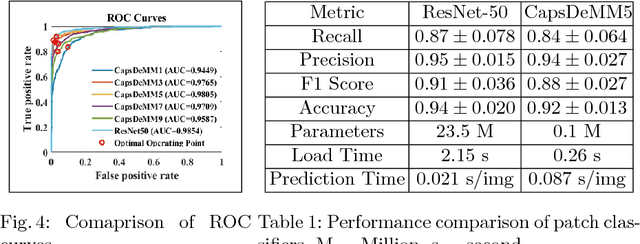
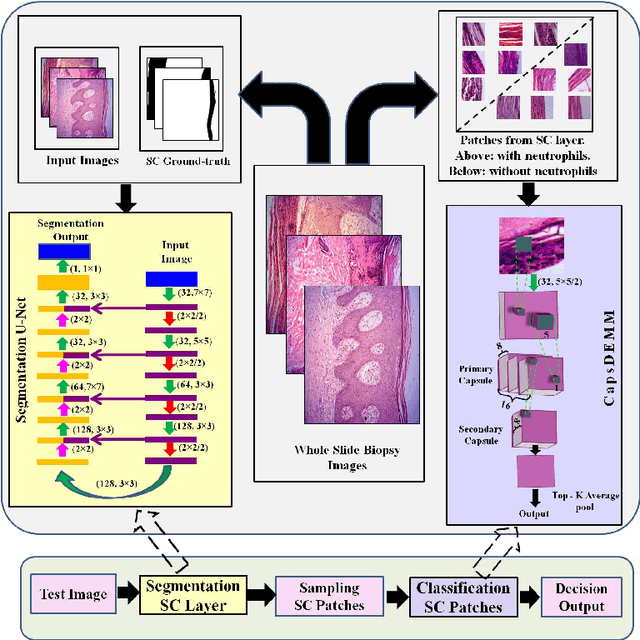

Abstract:This paper presents an approach for automatic detection of Munro's Microabscess in stratum corneum (SC) of human skin biopsy in order to realize a machine assisted diagnosis of Psoriasis. The challenge of detecting neutrophils in presence of nucleated cells is solved using the recent advances of deep learning algorithms. Separation of SC layer, extraction of patches from the layer followed by classification of patches with respect to presence or absence of neutrophils form the basis of the overall approach which is effected through an integration of a U-Net based segmentation network and a capsule network for classification. The novel design of the present capsule net leads to a drastic reduction in the number of parameters without any noticeable compromise in the overall performance. The research further addresses the challenge of dealing with Mega-pixel images (in 10X) vis-a-vis Giga-pixel ones (in 40X). The promising result coming out of an experiment on a dataset consisting of 273 real-life images shows that a practical system is possible based on the present research. The implementation of our system is available at https://github.com/Anabik/CapsDeMM.
 Add to Chrome
Add to Chrome Add to Firefox
Add to Firefox Add to Edge
Add to Edge